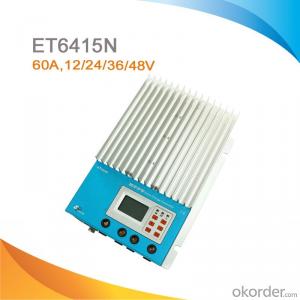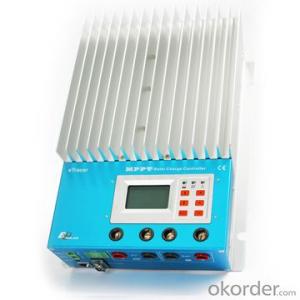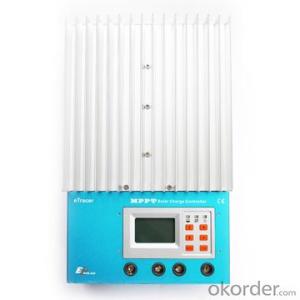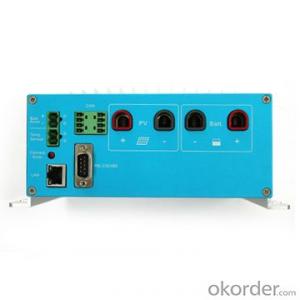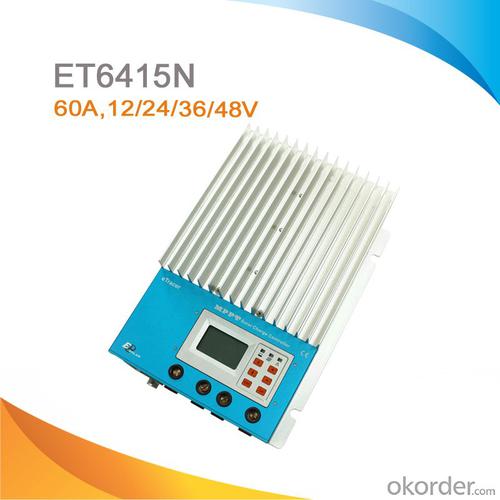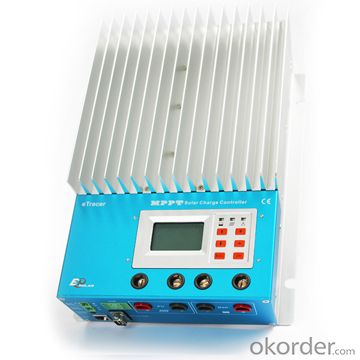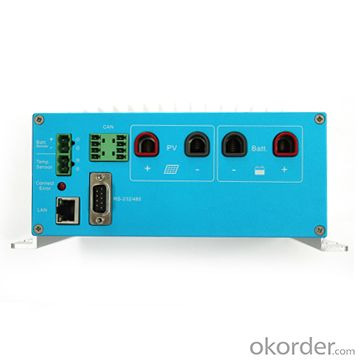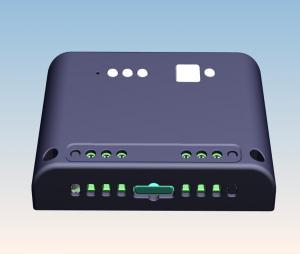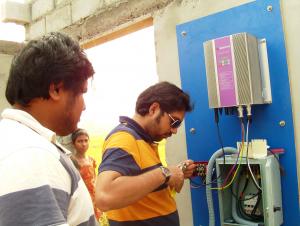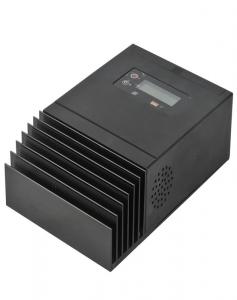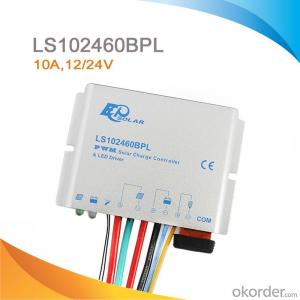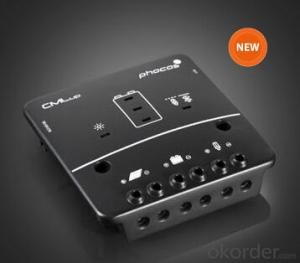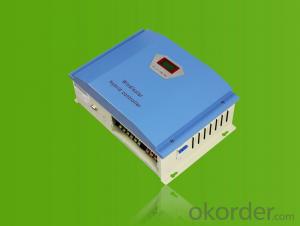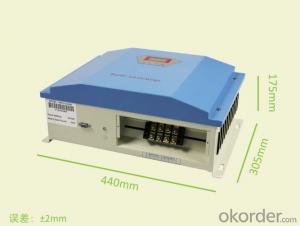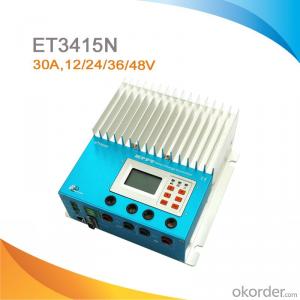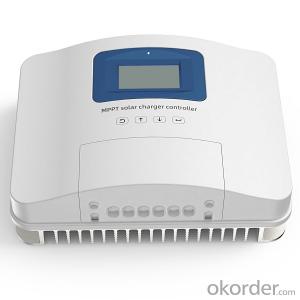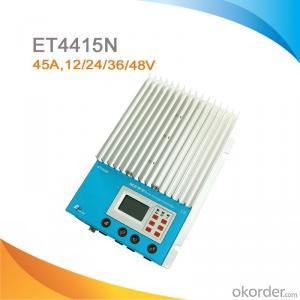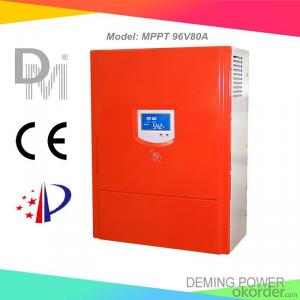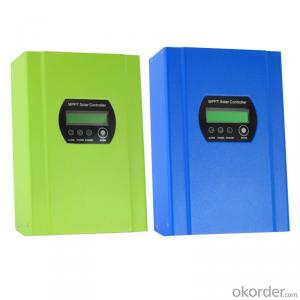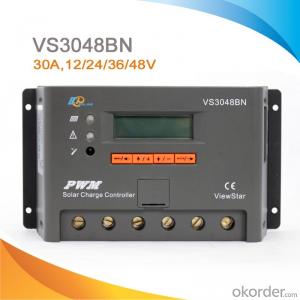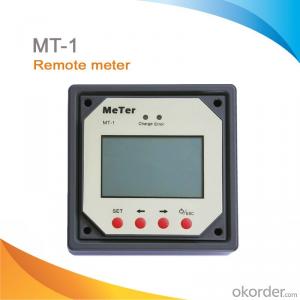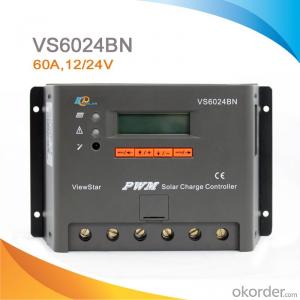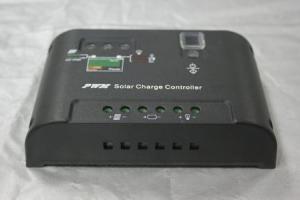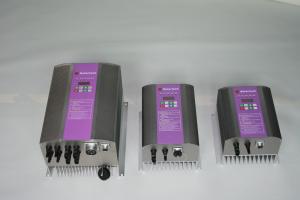MPPT Solar System Charge Controller 60A,12/24/36/48V,ET6415N
OKorder Service Pledge
OKorder Financial Service
You Might Also Like
Descriptions
This is an industrial grade product with advanced Maximum Power Point Tracking (MPPT) algorithm. It can deliver the maximum available power for charging batteries and charge a lower nominal voltage battery from a higher nominal voltage array. And can be applied in the off-grid PV systems up to 3KW. The die-cast aluminum design ensures excellent heat dispersion.
Specifications
MPPT charge controller
Maximum power point tracker
temperature compensation
LCD display
Communicate with PC
Features:
·12/24/36/48V auto work
·Advanced MPPT technology
·Several seconds tracking speed
·High Tracking efficiency of 99%
·Multiphase synchronous rectification technology
·Peak conversion efficiency of 98%
·DSP&ARM processors architecture ensures high speed and performance
·Gel, Sealed, Flooded battery option
·Max. 450 days data logging by connection to PC
·Multifunction LCD displays system data and status
·Three kinds of communication ports :RS232, CAN BUS and Ethernet
·Three stages charging optimizes battery performance
·Software update by users
Electronic Protections:
·PV short circuit protection
·PV reverse polarity protection
·PV overvoltage alarm protection
·PV over current protection
·Battery overcharge protection
·Battery over discharge protection
·Battery reverse polarity protection
·Overheating protection
Specification:
Model | ET3415N |
Rated system voltage | 12V/24V /36V/48V auto work |
Rated battery current | 30A |
Max. PV open circuit voltage | 150V |
Voltage range | 8~72V |
Max.PV input power | 400W (12V) 800W (24V) 1200W (36V) 1600W (48V) |
Self-consumption | 1.4~2.2W |
Grounding | Negative |
Dimension | 231x203x105mm |
Terminal | 35mm2 |
Net Weight | 4.1kg |
Working temperature | -25℃~+55℃ |
Storage temperature range | -30℃~+85℃ |
Humidity | 10%-90% NC |
Enclosure | IP20 |
Altitude | ≤3000m |
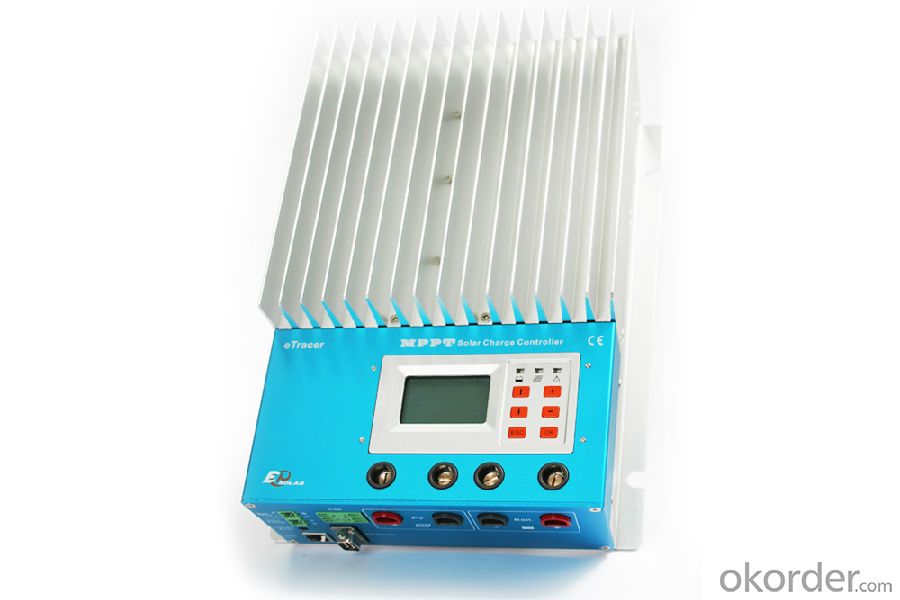
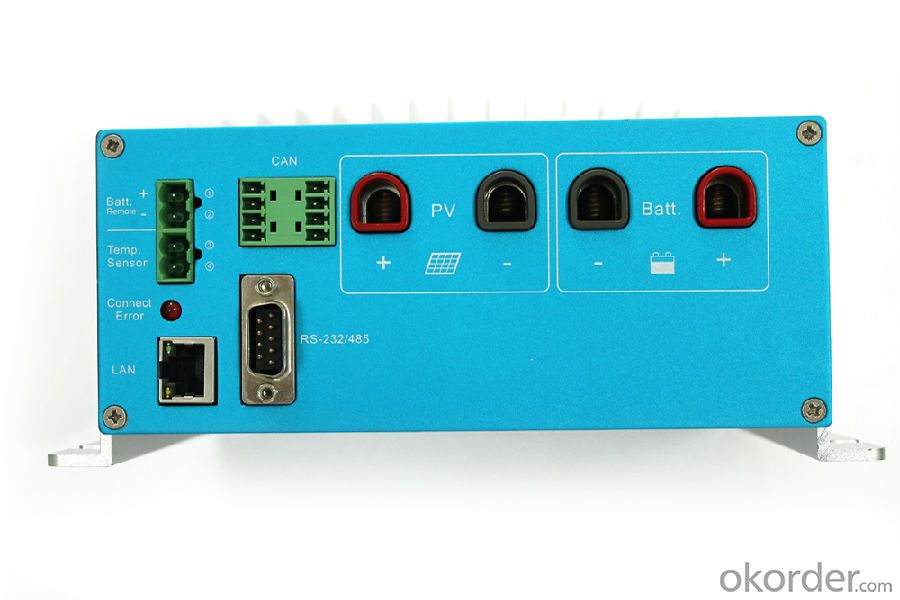
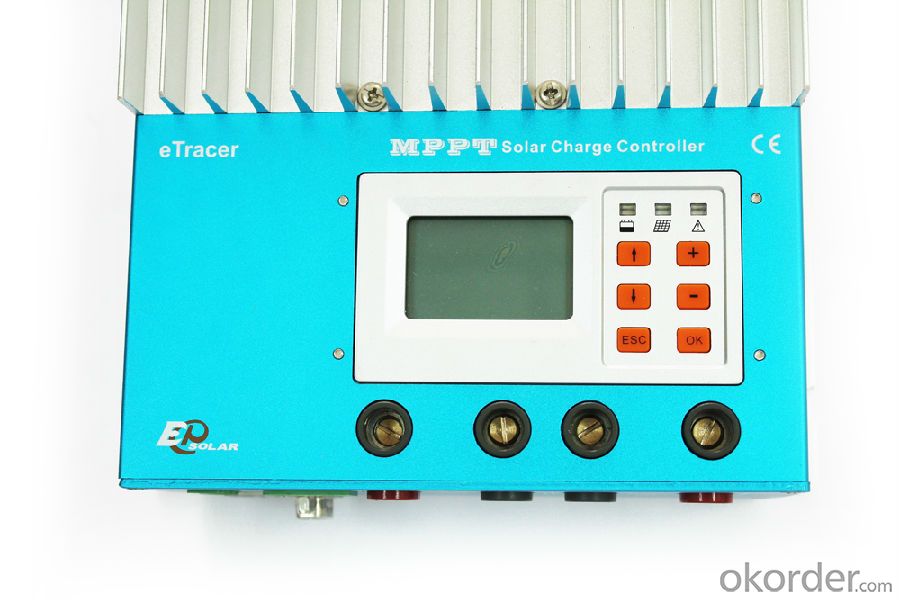
FAQ
1. What is included in the package?
1*MPPT Solar Charge Controller
1*User Manual
2. What does the battery red indicator LED mean?
Low voltage of battery
- Q: What is the maximum output voltage for a solar controller?
- The maximum output voltage for a solar controller typically depends on the specific model and its design specifications. However, in most cases, solar controllers have a maximum output voltage of around 12 to 24 volts.
- Q: Can a solar controller prevent overcharging of batteries?
- Preventing overcharging of batteries is one of the key functions of a solar controller. Also referred to as a charge controller or regulator, it plays a vital role in a solar power system by regulating the voltage and current that flows from the solar panels to the batteries. Its primary purpose is to protect the batteries from overcharging, as this can result in reduced battery life and potential damage. The solar controller constantly monitors the voltage and state of charge of the batteries, making adjustments to the charging current as necessary. When the batteries reach full charge, the solar controller prevents any further charging by redirecting the excess energy generated by the solar panels. Typically, this is achieved by either reducing the charging current or disconnecting the panels from the batteries. In addition to its basic functions, some advanced solar controllers offer additional features such as temperature compensation and equalization charging. Temperature compensation ensures optimal battery performance and longevity by adjusting the charging voltage based on the battery temperature, preventing overcharging or undercharging in different environmental conditions. On the other hand, equalization charging is a controlled overcharging process that is performed periodically to balance the battery cells and eliminate sulfation, ultimately enhancing battery performance. In summary, a solar controller is an indispensable component in a solar power system that safeguards the batteries against overcharging. Its presence ensures the longevity and optimal performance of the batteries, making it an essential aspect of any solar setup.
- Q: What is the maximum load current that a solar controller can handle?
- The maximum load current that a solar controller can handle depends on the specific model and rating of the controller. It is important to refer to the manufacturer's specifications or consult the product manual to determine the maximum load current capacity of a particular solar controller.
- Q: What is the maximum load wattage a solar controller can handle?
- The maximum load wattage a solar controller can handle depends on the specific model and its specifications. It can range from a few hundred watts to several thousand watts, depending on the capacity and design of the controller.
- Q: How does a solar controller handle power fluctuations in the grid-tied system?
- A solar controller in a grid-tied system handles power fluctuations by continuously monitoring the grid voltage and frequency. When the grid voltage or frequency exceeds or falls below the allowable limits, the solar controller adjusts the power output from the solar panels accordingly. It can either reduce or increase the power output to maintain a stable grid connection. This helps to prevent damage to the grid-tied system and ensure the smooth operation of both the solar panels and the grid.
- Q: Can a solar controller be used with solar panels that are connected to a solar air conditioning system?
- Yes, a solar controller can be used with solar panels that are connected to a solar air conditioning system. A solar controller is a device that regulates the flow of electricity from the solar panels to the air conditioning system. It helps optimize the energy generated by the solar panels and ensures that the system operates efficiently. The solar controller monitors the electricity output of the solar panels, controls the charging of batteries (if present), and directs the appropriate amount of power to the air conditioning system. By using a solar controller, the solar panels can be effectively integrated into the solar air conditioning system to maximize energy utilization and reduce reliance on the grid.
- Q: What is the maximum discharge voltage of a solar controller?
- The maximum discharge voltage of a solar controller typically depends on the specific model and manufacturer. It can range from around 12 volts to 48 volts or higher, depending on the system's design and intended usage.
- Q: Can a solar controller be used with a solar-powered remote monitoring system?
- Yes, a solar controller can be used with a solar-powered remote monitoring system. A solar controller is designed to regulate the charging of batteries in a solar power system, ensuring efficient utilization of solar energy. By using a solar controller, the remote monitoring system can effectively manage and optimize the power supply from solar panels, enabling continuous operation and reliable performance.
- Q: Can a solar controller be used with solar panel balcony mounts?
- Yes, a solar controller can be used with solar panel balcony mounts. A solar controller is an essential component that regulates the charging process of the solar panel by managing the flow of electricity between the panel and the battery. It helps prevent overcharging and protects the battery from damage. Whether the solar panels are mounted on a balcony or any other location, a solar controller can be used to optimize the charging efficiency and ensure the longevity of the battery.
- Q: How do I connect a solar controller to a remote monitoring system?
- To connect a solar controller to a remote monitoring system, you will typically need to follow a few steps. First, ensure that your solar controller is compatible with a remote monitoring system. Check the specifications and documentation provided by the manufacturer to confirm this compatibility. Next, identify the communication method supported by your solar controller and the remote monitoring system. It could be via Wi-Fi, Ethernet, cellular network, or other protocols. This information will help you determine the necessary hardware or software components required for the connection. Once you have the necessary components, follow the instructions provided by the remote monitoring system to set up the connection. This may involve configuring network settings, entering authentication details, or registering your solar controller on the monitoring platform. Ensure that both the solar controller and the remote monitoring system are powered on and connected to the same network or communication channel. Test the connection to verify that data from the solar controller is being transmitted and displayed on the remote monitoring system. If you encounter any difficulties during the setup process, consult the user manuals or reach out to the manufacturers for further assistance.
Send your message to us
MPPT Solar System Charge Controller 60A,12/24/36/48V,ET6415N
OKorder Service Pledge
OKorder Financial Service
Similar products
Hot products
Hot Searches
Related keywords
